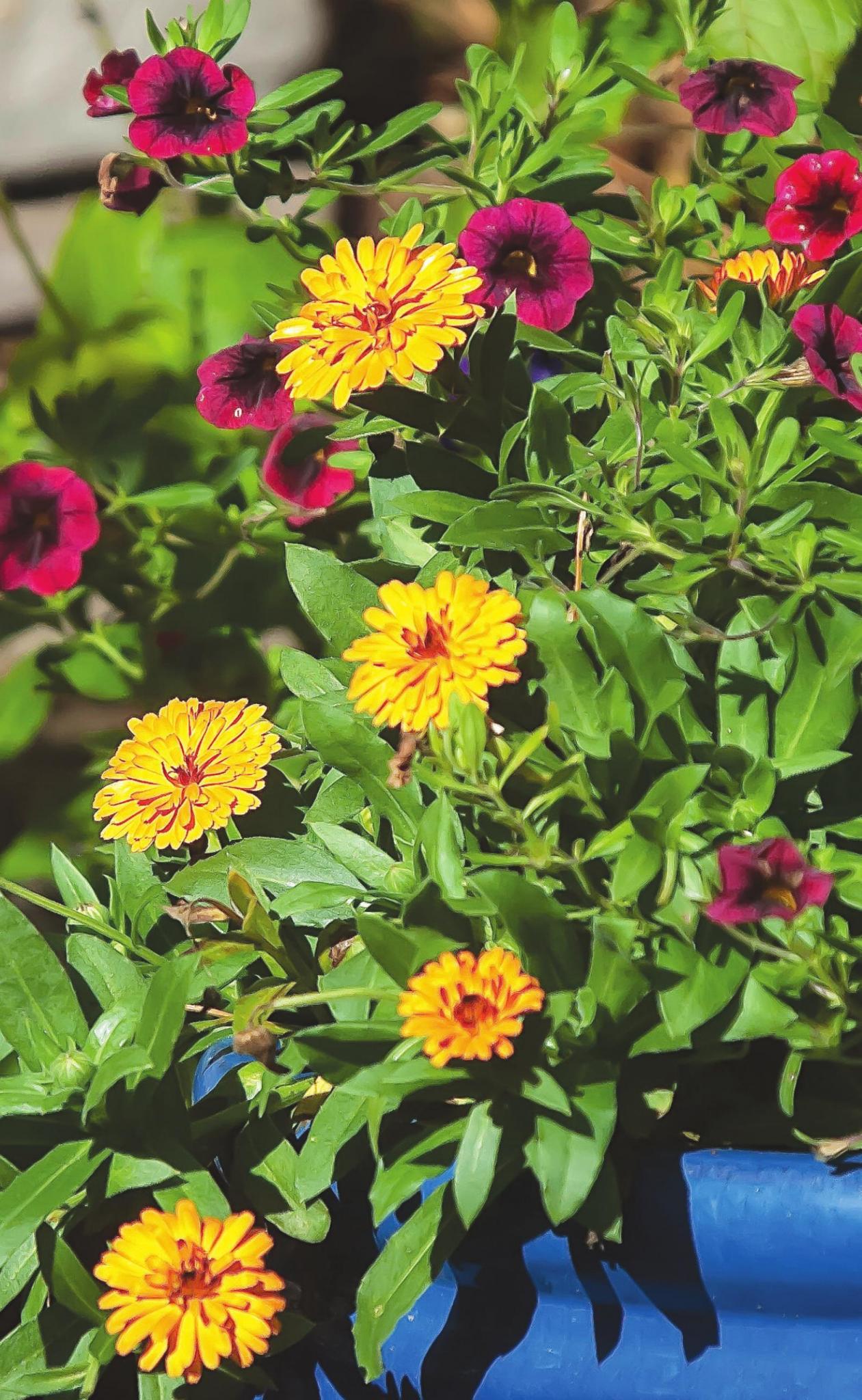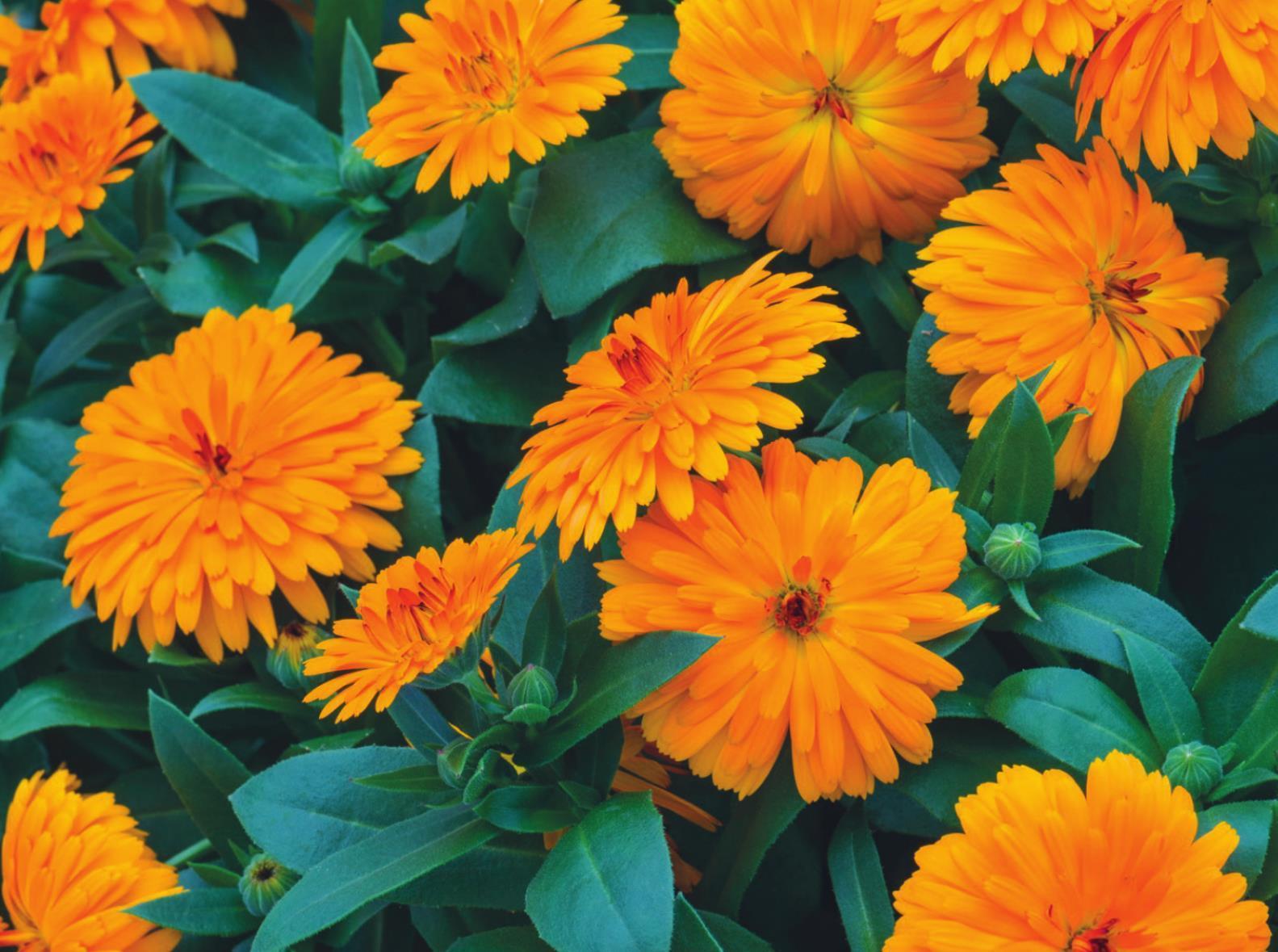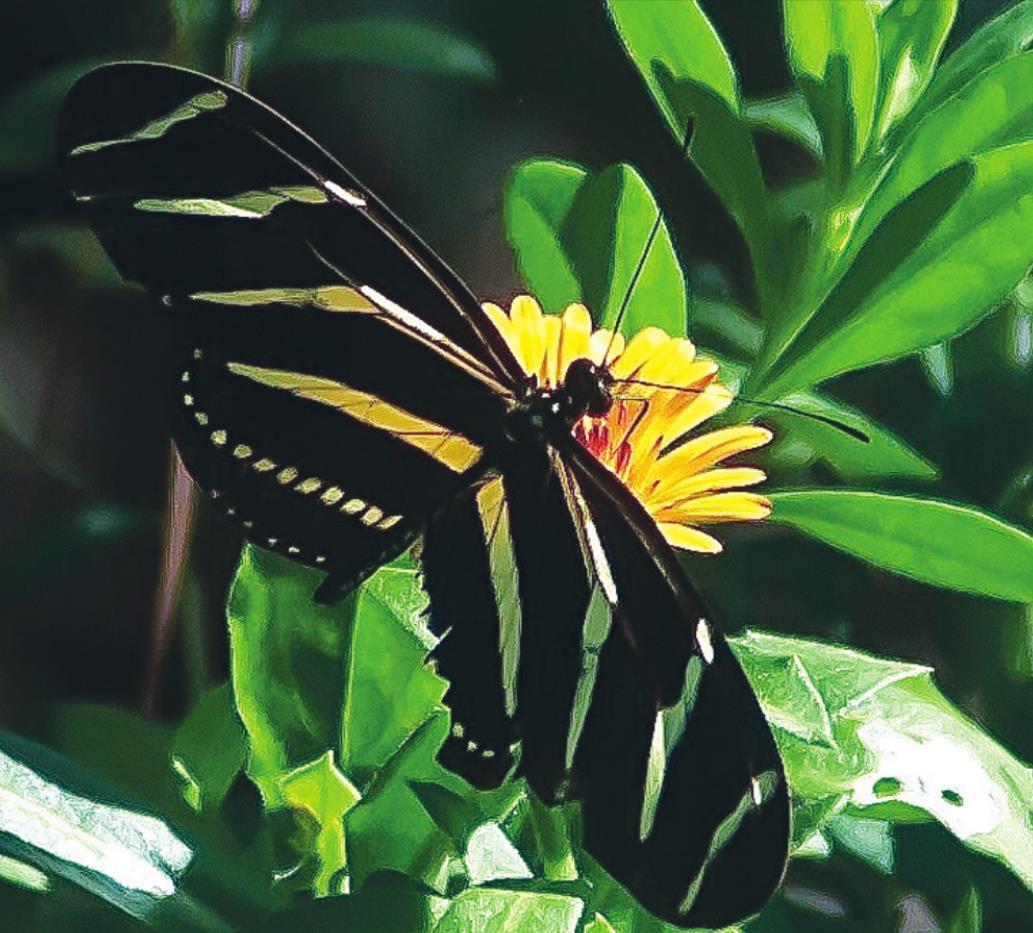
Lady Godiva Orange calendula and Superbells Pomegranate Punch calibrachoa make a wonderful partnership.


Lady Godiva calendulas come in orange and yellow and reach 16- inches tall and 18-inches wide. Photos by Norman Winter

This Zebra longwing butterfly has found valuable nectar in the Lady Godiva Orange calendulas. Photo by Norman Winter
Lady Godiva Calendulas: Award-winning performance North to South
The Garden Guy fell in love with calendulas a long time ago, and then suddenly they became like the four-leaf clover at the garden center. Hopefully Lady Godiva will change all of that. If you have never grown this Aster family member, you are in for a treat.
You will find this award-winning calendula comes in Lady Godiva Yellow and Lady Godiva Orange. By award winning, I am talking about Top Performer Awards, University of Florida, Penn State and Cornell University. In other words, north to south you’ll find an outstanding performance.
Botanically speaking they are, Calendula officinalis and native to Southern Europe. They are known in much of the world as English marigolds or pot marigolds. I was taught that their planting season normally coincides with pansy planting time wherever you live.
My October-planted calendulas have been growing and expanding in size without a lot of supervision on my part. Planting in October let them get quite a few exposures to cold before the frigid temps that so far have reached 24. Those of you that plant pansies in the early spring will find Lady Godiva will not only dazzle but offer an extended season via its heat tolerance.
I was thrilled with another trait that I had never anticipated. In our area of Georgia, we have been experiencing near miraculous event with Zebra heliconian butterflies, also called Zebra longwings. Not only did we not anticipate ever having them, but we had multiple generations lasting well into December.
You can guess where I am headed. After the freezes took out almost all possible nectar sources for butterflies, we figured the butterfly or Zebra season was over. But with some warm days in mid-December, bees and Zebra longwings returned and found my Lady Godiva Orange calendula to be just perfect.
While I have been touting planting them at pansy-planting time, I chose to combine mine with Superbells Pomegranate Punch and Superbells Grape Punch calibrachoas. These little petunia relatives are way underused for cool-season crops and I was delighted to see them for sale as a fall crop in Columbus.
Lady Godiva Orange and Lady Godiva Yellow need fertile, welldrained soil with plenty of sun to maximize their performance. To the Garden Guy they are simply amazing in mixed containers with a top-grade potting mix. I’ve got mine mixed with the Superbells Pomegranate Punch calibrachoas and Lemon Coral sedum with its flash of chartreuse.
You will find them producing large double flowers and reaching 16-inches tall and 18-inches wide, attractive to pollinators and thankfully not on the deer menu. They are easy to maintain and require no deadheading. Space your plants eight to 12 inches apart.
If you are an herb lover you already know the virtue of the calendula in the culinary and medicinal world. Shoot, it was the 2008 Herb of the Year. I, on the other hand, am touting it as a cool season beauty. There are very few flowers in the Aster family that we can grow in the cool season and the Lady Godiva calendulas offer a great opportunity.
Follow me on Facebook @NormanWinterTheGardenGuy for more photos and garden inspiration.











